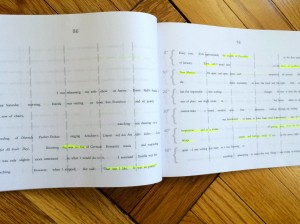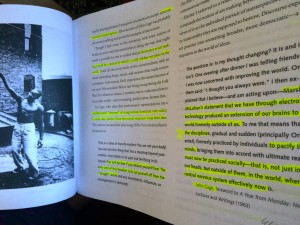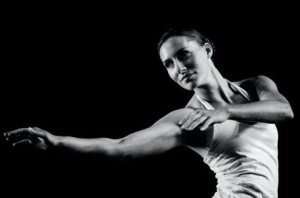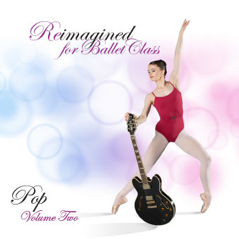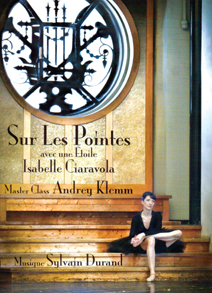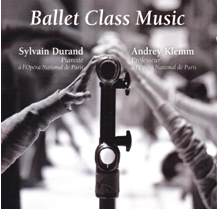 The opening of the Royal Ballet’s Alice’s Adventures in Wonderland interposes a psychological basis for Wonderland. Alice (Lauren Cuthberton) is not a little girl in this version, but a young teenager who shares an infatuation with the gardener’s son Jack (Sergei Polunin). But, tsk tsk, this is the Victorian Era and Alice’s mother (Zenaida Yanowsky) disapproves of this class-disparate romance. She takes the opportunity to dismiss Jack after she erroneously believes he stole a tart. Not surprisingly, Yanowsky returns in Wonderland as the Queen of Hearts and Polunin returns as the Knave of Heart who “stole tarts”. The premise of dual characters is carried farther as family friend Lewis Carroll (Edward Watson) reappears as The White Rabbit, and tea guests such as the visiting Rajah (Eric Underwood) and Magician (Steven McRae) later morph into The Caterpillar and Mad Hatter.
The opening of the Royal Ballet’s Alice’s Adventures in Wonderland interposes a psychological basis for Wonderland. Alice (Lauren Cuthberton) is not a little girl in this version, but a young teenager who shares an infatuation with the gardener’s son Jack (Sergei Polunin). But, tsk tsk, this is the Victorian Era and Alice’s mother (Zenaida Yanowsky) disapproves of this class-disparate romance. She takes the opportunity to dismiss Jack after she erroneously believes he stole a tart. Not surprisingly, Yanowsky returns in Wonderland as the Queen of Hearts and Polunin returns as the Knave of Heart who “stole tarts”. The premise of dual characters is carried farther as family friend Lewis Carroll (Edward Watson) reappears as The White Rabbit, and tea guests such as the visiting Rajah (Eric Underwood) and Magician (Steven McRae) later morph into The Caterpillar and Mad Hatter.
Video projections are appropriately used to portray Alice falling down the rabbit hole. In the sequences that follow, a combination of projections and more traditional theatrical effects help create the famous “Eat Me” and ”Drink Me” episodes (where Alice grows and shrinks) as well as the “Pool of Tears”. All of these scenes are fun to watch, although, if you haven’t read the book in while, they might be hard to follow in places. “The Pool of Tears” is actually the most visually effective though it’s also the most conventional – dancers “swimming” in between rows of stationary scenery painted to look like waves. While suggesting just enough of reality, it retains the charm of a storybook illustration – something that is not as easy to accomplish with video projections.
A challenge in adapting Alice in Wonderland for a non-verbal medium is the fact that much of the story’s potency comes from wordplay and parodies of poems and songs. The wordplay, of course, can’t be translated into dance, but there is a perhaps a nod to it in some of the projected backgrounds which feature skies of scrambled letters. The element of parody though does find an interesting parallel in Christopher Wheeldon’s choreography which incorporates spoofs of classical ballet, most memorably in the Queen of Hearts’ botched Rose Adagio. Elsewhere, Wheeldon employs a mix of non-satirical classical ballet, contemporary ballet, and, occasionally, other styles of dance. The Mad Hatter is in fact reimagined as a tap dancer, an effect which works remarkably well.
As for the music, I admit I have mixed feelings about the original score by Joby Talbot. Of course, it makes sense that a soundscape for Alice in Wonderland would express the madness, confusion, curiosity, and even violence that are integral to the story. However, whether or not you enjoy Talbot’s approach to this will depend on your taste for modern symphonic music, which, of course, doesn’t shy away from dissonance and percussion-heavy moments. At the risk of sounding like a throwback, I think it’s harder to pull off effective dissonance than it is effective melody. So, to me, the score is most compelling when it sticks to the latter. During these moments, such as Alice and the Knave of Hearts’ courtroom pas de deux, the music takes on an engaging cinematic quality which enhances the already engaging visuals onstage.
Speaking of engaging visuals… the costumes, colors, scenery (with a small caveat about out-of-place grimness of the kitchen set with its sausage maker and pig carcasses), lighting, and overall composition of each scene is top-notch, sometimes to the degree that the designs begin to compete with the dancing for your attention. The courtroom in Wonderland just might be the best for its geometry, full prism of costumes, and a giant house of cards looming in the background.
When that house of cards literally and figuratively falls and Alice awakens in reality, we notice that she is now wearing a modern-day dress. The Knave of Hearts/Jack, sitting nearby her, is sporting a t-shirt and blue jeans. Yes, as it turns out, this story wasn’t about a Victorian youth dreaming of madness, love, confusion, and discovery based on her real-life experiences. It was instead a dream about a Victorian youth who had such a dream. Hmm… I’m not sure this conclusion is quite as interesting as the scenario seemingly set forth at the beginning.
The dancing, of course, is world-class all around, as you would expect from the Royal Ballet. As Alice, Lauren Cuthbertson is like a music-box ballerina in her seemingly effortless precision, line, and musicality – her technique so pure it’s almost startling. She also possesses a natural girlish playfulness and lightness that are ideally suited for the role. The other standout is Zenaida Yanowsky as the Queen of Hearts. Her acting is spot-on, and, even more impressively, her classical grace radiates so thoroughly through her every movement that you’re simultaneously in awe of how well she embodies her comical character and how she makes it so beautiful to watch — without dampening the fire of the satiric choreography.
This OpusArte DVD of Alice’s Adventures in Wonderland is from 2011. Since then, the Royal Ballet has revised and extended the production. I haven’t yet seen the updated version, but Sarah Crompton of The Telegraph wrote that the changes were all improvements. I truly believe that this ballet has masterpiece potential, though, as with all art, it takes time and revision to achieve that end.
Purchase this DVD:






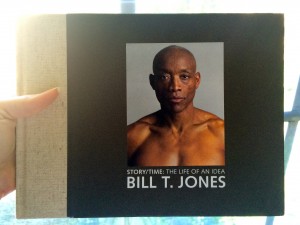 STORY/TIME is a three-part book that also serves as a companion piece to the Bill T. Jones/Arnie Zane Dance Company’s live production of Story/Time that will appear at New York Live Arts on November 4-8, 11-15 at 7:30pm. More information:
STORY/TIME is a three-part book that also serves as a companion piece to the Bill T. Jones/Arnie Zane Dance Company’s live production of Story/Time that will appear at New York Live Arts on November 4-8, 11-15 at 7:30pm. More information: 